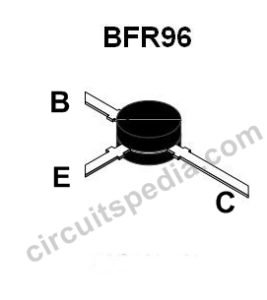This is the circuit diagram of mobile detector .
This circuit can detect the RF signal From mobile phones and give a signal through Sound and LED Glow. This pocket-sized mobile communication detector or sniffer can sense the existence of a mobile device. This mobile sensor can be used to avoid the use of mobile phones in private rooms, examination halls, etc. It is also useful for detecting the use of the mobile phone for spying and other related activities. The circuit can detect incoming and outgoing calls, SMS, MMS, GPRS usage, and video transmission even when the mobile phone is set aside in silent mode.
BFR96 transistors is designed for application in satellite communication systems, small-signal amplifiers, wideband, low noise, front end, high-speed switches, High-Frequency oscillators. BFR96TS Silicon NPN Planar RF Transistor. RF amplifier up to GHz range especially for wideband antenna amplifier.
When The mobile signal detects then the LED will glow And Buzzer beeped instantly.
• It can sense the activity of a mobile phone from a distance of 8 meters or more.
• When the mobile phone is activated within the range, a sound is heard through the speaker.
• The circuit is able to detect all forms of mobile phone activity even when it is in silent mode. The circuit is designed as a sensitive RF detector. The RF signal diode 1N3491 forms the major element. The output signal from the diode is pre-amplified by the transistor BFR96. It is a high frequency (Microwave frequency) low power transistor with a huge current gain (approximately 15dB at 0.5GHz) and bandwidth.
• The pre-amplified signal is fed to the next amplifier stage built around IC TL071, it is a low noise JFET input op-amp with low input bias and offset current. The biFET technology gives a high slew rate to the IC.
Here the TL071 is designed as an inverting amplifier, the inverting input of op-amp receives the pre-amplified signal
• The RF reception and performance of the circuit is dependent on many factors such as output power from the mobile device, orientation and position of the cell phone.
The potentiometer (R1) can be adjusted to vary the gain of op amp circuit.
Components
Diode
1N3491-1
1N4148-1
Transistor
BC547-1
BFR96-1
IC
TL071-1
Resistor
15K-1
18K-2
1K-2
10K-1
100K-1
Preset-1M-1
Capacitor
10uf 25v-2
47uf 25v-1
0.1uf (ceremic)-1
Buzzer(12v)-1
LED-1




Appreciate the recommendation. Let me try it out.
Your blog post was really enjoyable to read, and I appreciate the effort you put into creating such great content. Keep up the great work!